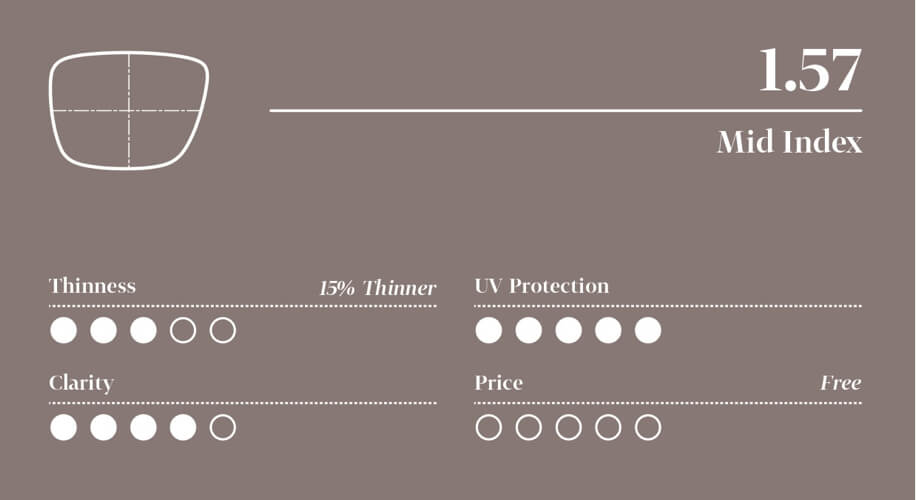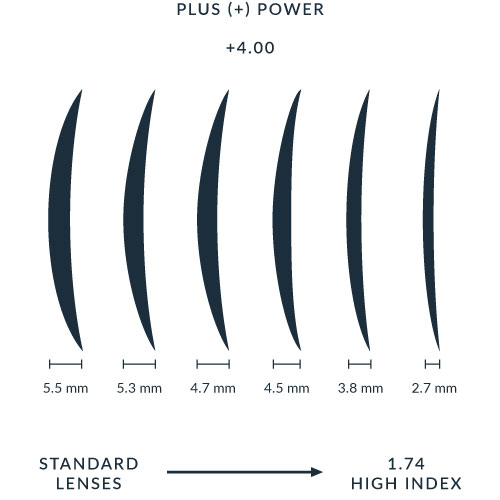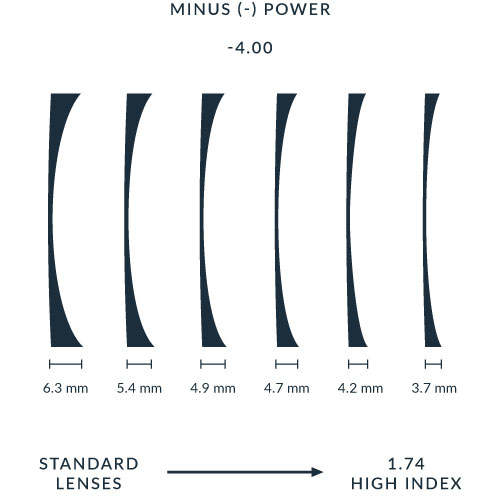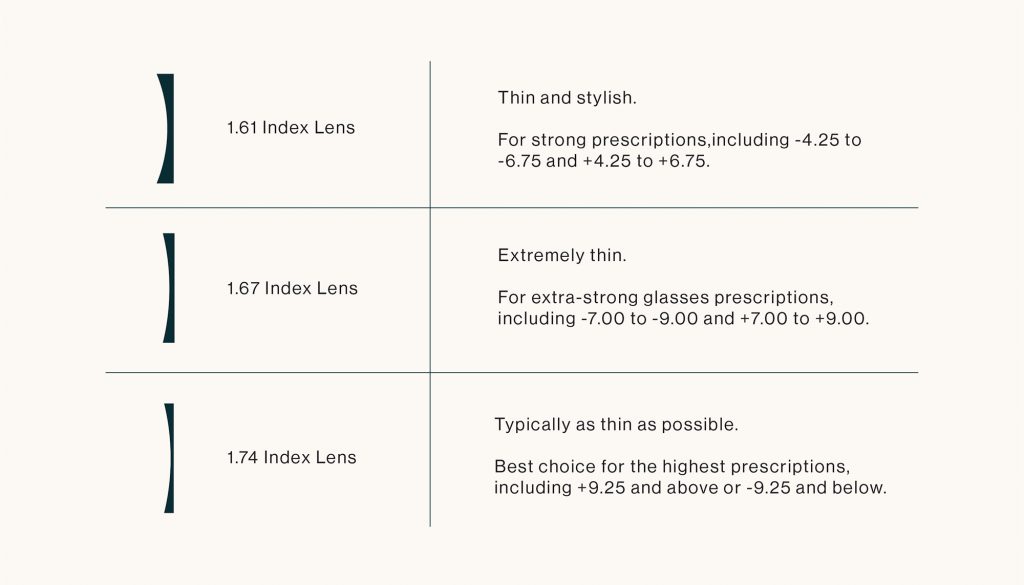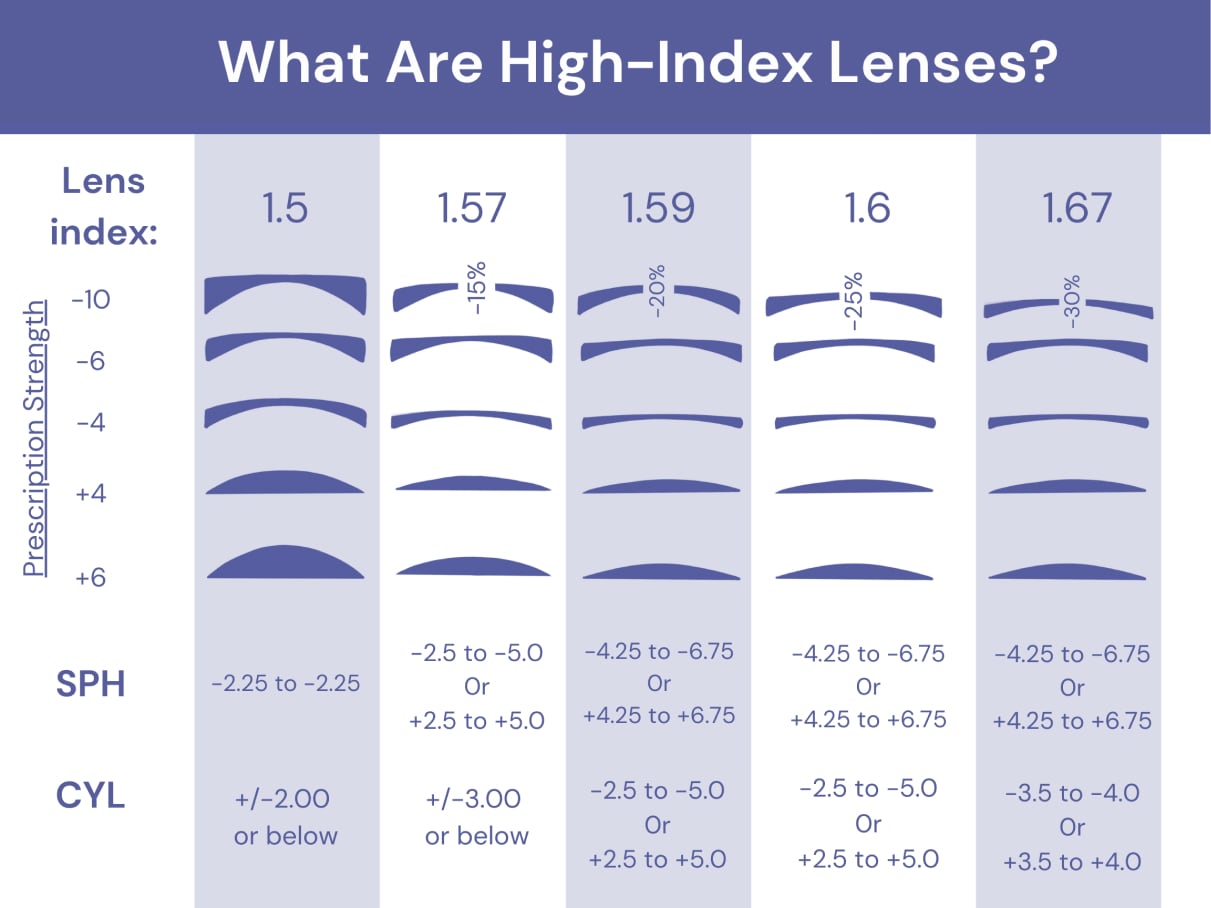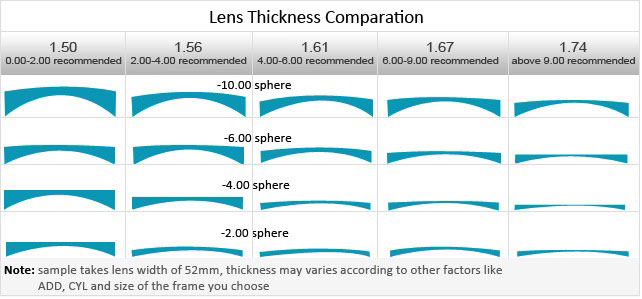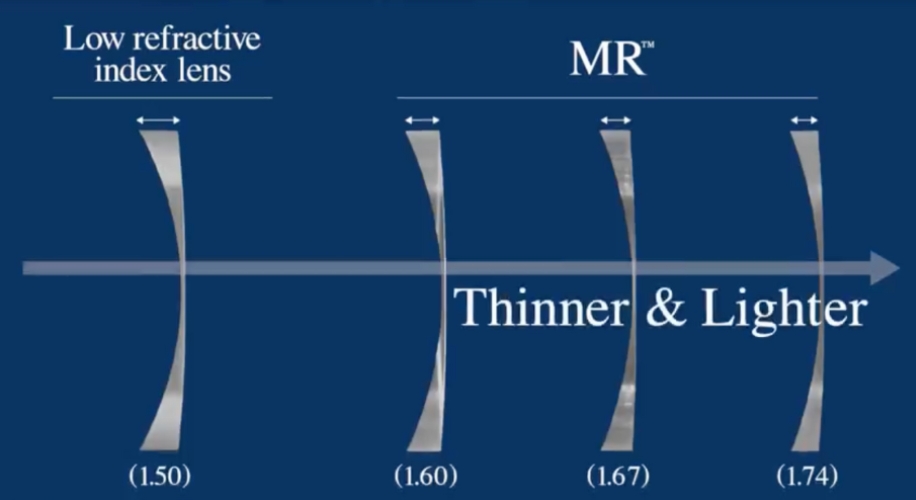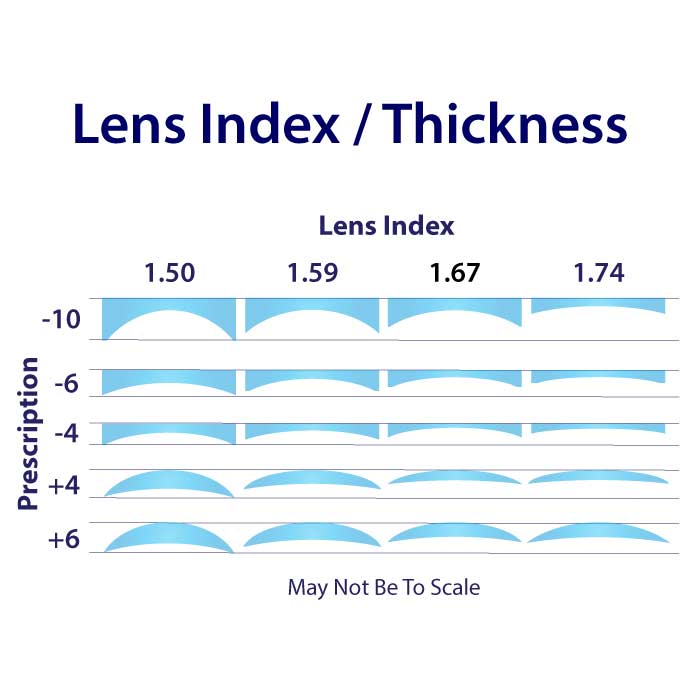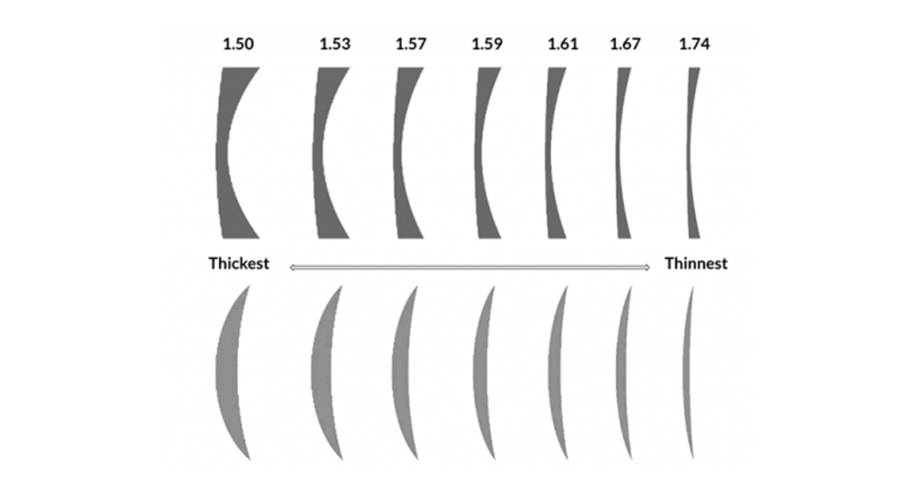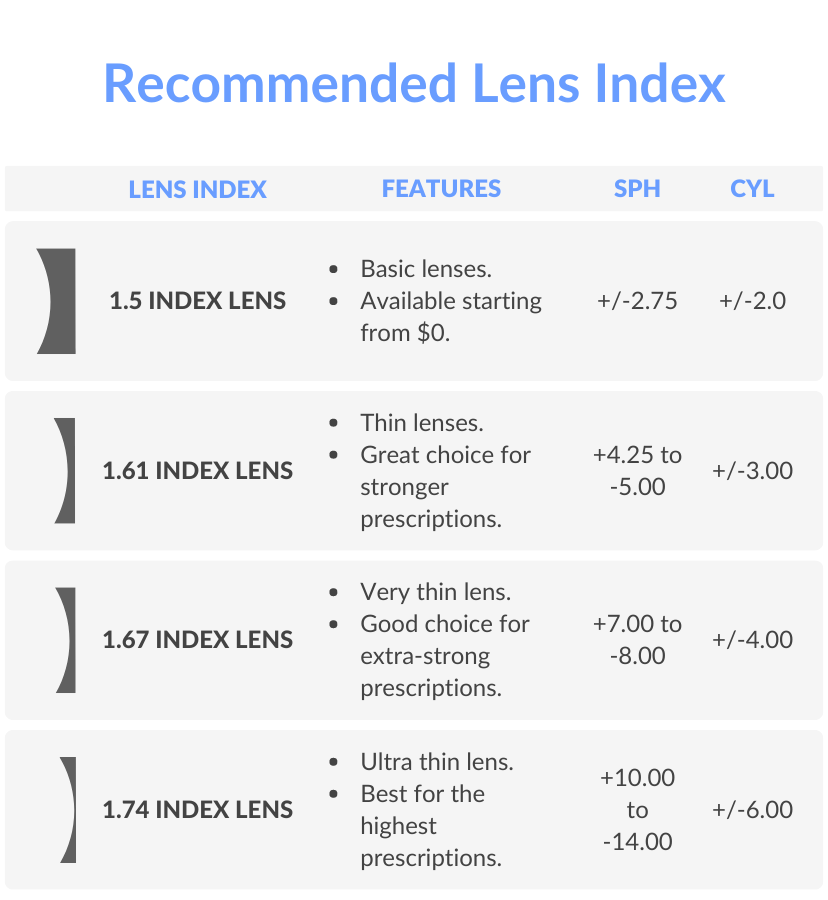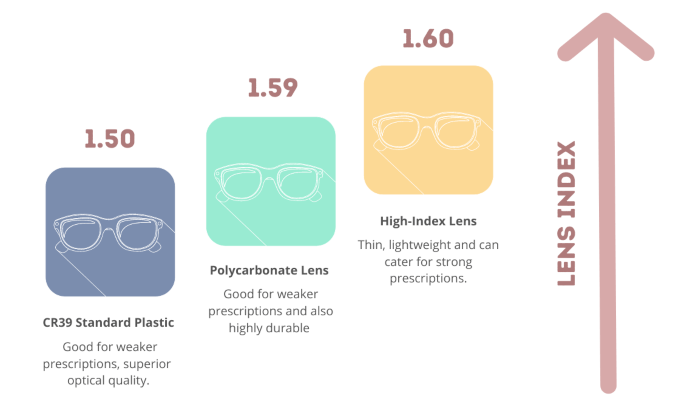How Thick Are 1.57 Mid Index Lenses

The quest for thinner, lighter eyeglasses has driven significant advancements in lens technology. Among the myriad of options, 1.57 mid-index lenses are a popular choice, balancing optical performance with cosmetic appeal. But just how thick are these lenses, and what factors influence their final dimension?
Determining the exact thickness of a 1.57 mid-index lens isn't straightforward. It's a nuanced issue that hinges on several key variables, including the wearer’s prescription, the frame size and shape, and the specific lens design. This article delves into the complexities of lens thickness, offering a comprehensive understanding of 1.57 mid-index lenses and the elements that contribute to their final profile.
Understanding Refractive Index and Lens Thickness
The refractive index of a lens material directly impacts its thickness. A higher refractive index allows light to bend more sharply, meaning less material is needed to achieve the same focusing power.
Therefore, a 1.57 mid-index lens can be made thinner than a standard 1.50 index lens for the same prescription. This is a primary reason why people opt for higher index materials.
As stated in The American Academy of Ophthalmology's basic and clinical science course, "the refractive index of a material is the ratio of the speed of light in a vacuum to its speed in the material." This directly relates to lens thickness and overall appearance.
Factors Influencing Lens Thickness
Prescription Strength
The most significant factor determining lens thickness is the prescription itself. Higher prescriptions, particularly for nearsightedness (myopia), require thicker edges.
For farsightedness (hyperopia), the center of the lens will be thicker. The greater the refractive error needing correction, the more pronounced these thickness differences become.
Frame Size and Shape
The size and shape of the chosen frame also play a crucial role. Larger frames generally require larger lenses, which can result in thicker edges, especially for nearsighted prescriptions.
Smaller frames can minimize edge thickness, and certain frame shapes are more conducive to thinner lenses. Lens designers will consider frame data when calculating the optimal lens blank size and centration.
Lens Design
Lens design advancements have further refined thickness optimization. Aspheric lens designs, for example, flatten the lens curvature, reducing thickness and distortion, especially at the edges.
These designs are particularly beneficial for higher prescriptions, as they minimize the "coke bottle" effect often associated with thicker lenses. Progressive lenses and other multifocal designs also incorporate sophisticated surface geometries that impact thickness distribution.
Comparing 1.57 to Other Index Lenses
A 1.57 mid-index lens offers a good balance between thickness, optical clarity, and cost. Compared to standard 1.50 index lenses, they are noticeably thinner and lighter, providing improved aesthetics and comfort.
Higher index lenses, such as 1.60, 1.67, or 1.74, offer even greater thinness but often come with a higher price tag and potentially increased chromatic aberration. The choice depends on individual needs and budget.
"The 'best' lens index depends on the individual's prescription, lifestyle, and aesthetic preferences," explains Dr. Emily Carter, an optometrist at Vision Source. "A 1.57 index is often a great compromise for moderate prescriptions."
Measuring Lens Thickness
Lens thickness is typically measured in millimeters (mm). The center thickness (CT) and edge thickness (ET) are important metrics.
For nearsighted lenses, the edge thickness is usually the critical measurement. For farsighted lenses, the center thickness will be most prominent.
While it's difficult to provide a precise thickness range for 1.57 lenses due to the variables involved, a general estimate for a moderate prescription (-3.00 to -5.00 diopters) in a moderate-sized frame would be an edge thickness between 2.0 mm and 4.0 mm. This is only a rough estimate; consulting with an optician is essential for accurate predictions.
The Role of the Optician
A skilled optician plays a vital role in selecting and fitting lenses. They can accurately assess the prescription, frame choice, and facial measurements to recommend the most suitable lens material and design.
They will also consider the patient's lifestyle and visual needs to ensure optimal visual performance and comfort. Opticians use specialized software to calculate lens thickness and predict the final appearance of the eyeglasses.
Future Trends in Lens Technology
Lens technology continues to evolve, with ongoing research focused on developing even thinner, lighter, and more optically advanced materials. Advanced manufacturing techniques, such as freeform lens surfacing, are enabling greater precision and customization in lens design.
We can expect to see further improvements in lens coatings, including anti-reflective, scratch-resistant, and blue light filtering options, enhancing both the performance and durability of eyeglasses. Nanomaterials and adaptive optics hold promise for even more revolutionary advancements in the future.
In conclusion, the thickness of 1.57 mid-index lenses is a variable quantity dependent on several factors. While they offer a good balance of thinness and optical quality, a thorough consultation with an eye care professional is essential to determine the most appropriate lens option for individual needs.
